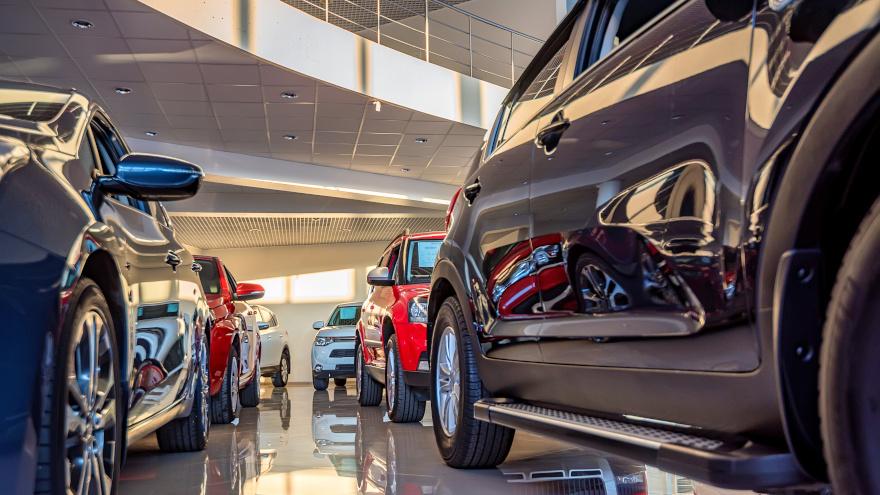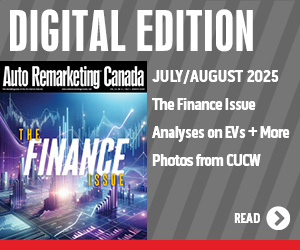The industry was ‘rocked’: Exploring the post-pandemic landscape for Canada’s used-car business

What’s the “new normal” for the post-pandemic used-vehicle market in Canada? How has the pandemic impacted the industry, and what are the lasting effects?
Jake Stacey, executive vice president of sales and training at LGM Financial Services and a speaker at Canada’s Used Car Week next month, breaks it down into three buckets: customer, people and experience.
“From a people perspective, talent has become difficult to find. Because in Canada, the provinces had very different approaches to how they treated businesses in the lockdowns,” said Stacey, who will explore these questions in her “Post-Pandemic Used Vehicle Gap: What’s Next?” session at Canada’s Used Week in Toronto on June 12.
“Some locked down completely, and dealers were totally closed. Other provinces allowed dealers to stay open with provincial requirements about social distancing and masks. And then other provinces allowed only a delivery experience,” Stacey said. “So, there were no dealers and no customers in the stores, unless they came to get a car. So, the normal course of operations, regardless of which one of those buckets you’re looking at, was completely disrupted.”
Further, the allocation of available products was highly impacted, because the pandemic collided directly with the chip shortage.
“So just as dealers felt they were emerging out of restrictions, all of a sudden it was, ‘We can’t make vehicles because we have no chips,’” Stacey said.
And then the customer experience is the third piece. Nobody in the industry knew what to expect anymore, Stacey said. The traditional experience of purchasing a vehicle was completely erased for a while.
“People didn’t know what to do, and they didn’t know how to pivot, and they didn’t know how to move off from that more traditional experience. So if I lump that all together from a 10,000-foot-view, I will simply say the industry was rocked,” Stacey said.
And the industry has started to creep into a new reality.
“Where I’ve seen the biggest success in recovery from the impact of the pandemic has been the stakeholder and partnership model, where a dealer is no longer on their own,” Stacey said. “They have OEM support; they have support from providers like us who work directly with OEMs … a partnership and stakeholder ecosystem is really the future in the automotive remarketing industry.”
Shortage of vehicles, shortage of parts
Amid COVID-19 and its aftermath was a shortage of vehicles. Stacey said the chip shortage was, of course, a huge driver of this shortage.
“When the shortage was sorted out, all of a sudden there was a backlog in factories. And so the backlog had to be expedited. And what happened was, because the parts and chip shortage wasn’t completely solved, vehicles were getting built with missing components,” said Stacey.
For example, a customer would have a factory order and their car might arrive without heated seats or a heated steering wheel. Their car would arrive without a function or a benefit or a feature they expected in their vehicle.
“So that impacted the customer experience at the same time, because there was a shortage of supply, people were holding onto their cars longer,” said Stacey. “So the used-car market did not receive those rentals, those two- to three-year short-term leases — those units that used to come back in and flow freely.”
There was a combination of challenges in the market, with COVID-19 driving a demand problem and the chip shortage driving a supply problem.
For the pre-owned market, this meant a shortage in vehicles that normally feed their inventories.
“What happened was buying power started to rule the day. So, the dealers and the dealer groups that had cash on hand and easy accessibility to auctions were suddenly thrust to the front of the line on the pre-owned side,” said Stacey. “They did their best to drive any volume they could through the pre-owned side of the business, which includes a very different customer profile than new, a very different employee profile and a very different customer experience.”
Amid these changes, many in the business were not sure which way to turn.
“What happened was people were panicking, so instead of thinking like an industry, individuals were going off worrying solely about their own survival, which was totally understandable. But this caused even more disruption for other dealers and brands,” said Stacey. “Where we are now is people are starting to realize that the industry is becoming successful as a whole. And so conversations like what’s going to happen at the (Canada’s Used Car Week) event in June are far more important than they’ve ever been.
“Because learning from peers that you might deem competitors is a great way for the industry in Canada to recover as a whole,” Stacey said.
It’s all through the lens of what customer expectations are today.
“Customer expectations post pandemic are way higher than they were before. They want more communication, more transparency, more tools — a more positive and personal experience,” Stacey said. “Dealers really have to be on their toes about what coming out of this thing looks like, and they need to hold themselves to a higher standard.”
‘New normal’ here to stay
Is there a “new normal” the industry is going to have to adjust to going forward? Or is the industry going to return to pre-pandemic environments? Those are questions on many people’s minds.
“I think we’re in a different era,” said Stacey. “I hear many people measuring themselves against pre-pandemic 2019 and being an executive in the industry and having a banking background, I don’t subscribe to that thinking at all.”
Instead, Stacey contends the new normal is her to stay.
“I believe all partners within the industry, banks, suppliers, OEMs, dealers, parts suppliers — all of us — have to really take a step back and ask ourselves, ‘On the supply chain of a customer experience, where do I fit? And what is my part to contribute?’ So that the industry itself recovers,” Stacey said.
The days of a fractured, individualistic industry could be gone.
“Unless we all come together and look at our industry as a true ecosystem where we all play a role, that customer is not going to want to participate,” said Stacey.
The customer experience is about the expectations of people who want to buy a car in Canada today, and then underneath that are regional and provincial nuances.
“Someone in Toronto wants a different experience than someone in Prince George, British Columbia, a northern rural community,” said Stacey.
And so across the OEM brands, Stacey says, that real work is in finding out who the customer is in every one of the regions and what those customers want.
“And then those of us who feed and supply and service dealers have got to come along with that ideal,” said Stacey.
The old model of a tumultuous relationship between OEM and franchised dealer is perhaps old news — fresh partnerships are being formed, Stacey said.
“We have to come together as subject and industry experts and deal with the economists in the banks and ask questions. And then go to the manufacturing side and say, ‘Can you do this?” said Stacey. “I’m not sure that like in an industry ecosystem, we’re doing a good enough job at having those conversations amongst ourselves — and the person we’re failing is the end customer.”
Used-vehicle market in a few words
In exploring what words or combinations of, encompass the post-pandemic used-vehicle market, Stacey came up with this tagline: “This is new. Are you?”
Explaining further, Stacey said, “When I say this it means, are you looking at things through the current lens? Are you skilling up your people in your dealer for this new customer? And along with that new customer, are the new expectations of that customer being met? Are you using the same measuring stick as you were before to measure your success?
“Because if you are, that measuring stick doesn’t fit anymore,” she said.
Another used-vehicle market descriptor: Outward and forward looking.
“Dealers need to be far more thoughtful as an industry. We need to be far more outward looking instead of looking at things like, ‘What does our own success mean to us?’,” Stacey said.
Instead, what does success look like for the people the industry is trying to serve?
“Do you really understand what people want? Because if you don’t understand in this new normal what people want, then you’re going to miss the mark,” Stacey said. “Today, success demands so much more rigor around process, around measurement, around loyalty and building loyalty.”
Stacey, said: “Are you willing to be more open-minded and learn as you go?
Stacey’s presentation at Canada’s Used Car Week is set for 2:15 pm (ET) on June 12. For more information, visit https://canada.usedcarweek.biz/


